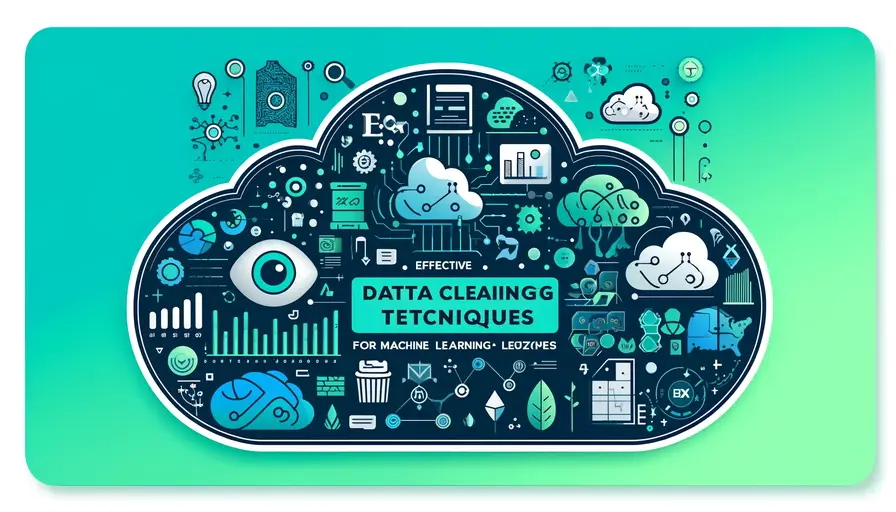
Comparing Machine Learning Algorithms for Regression

Machine learning regression algorithms are essential tools for predicting continuous values based on input data. They are widely used in various fields such as finance, healthcare, and marketing to forecast trends, analyze relationships, and make data-driven decisions. This article explores several popular regression algorithms, comparing their strengths, weaknesses, and practical applications.
Linear Regression: Simplicity and Interpretability
Basic Principles of Linear Regression
Linear regression is one of the simplest and most interpretable regression algorithms. It assumes a linear relationship between the input variables (features) and the output variable (target). The model aims to find the best-fitting straight line that minimizes the sum of squared errors between the observed and predicted values. The equation of the line is represented as:
$$y = \beta_0 + \beta_1 x_1 + \beta_2 x_2 + \ldots + \beta_n x_n + \epsilon$$
where \( \beta_0\) is the intercept, \(\beta_1, \beta_2, \ldots, \beta_n\) are the coefficients, and \(\epsilon\) is the error term.
 Particle Swarm Optimization
Particle Swarm OptimizationLinear regression is easy to understand and implement. It provides insights into the relationship between variables, making it a valuable tool for exploratory data analysis. However, it assumes a linear relationship and may not perform well if the true relationship is non-linear.
Implementing Linear Regression
Implementing linear regression is straightforward using libraries such as scikit-learn. Here is an example:
import numpy as np
import pandas as pd
from sklearn.linear_model import LinearRegression
from sklearn.model_selection import train_test_split
from sklearn.metrics import mean_squared_error
# Generate synthetic data
np.random.seed(42)
X = 2 * np.random.rand(100, 1)
y = 4 + 3 * X + np.random.randn(100, 1)
# Split the data
X_train, X_test, y_train, y_test = train_test_split(X, y, test_size=0.2, random_state=42)
# Create and train the model
model = LinearRegression()
model.fit(X_train, y_train)
# Predict and evaluate
y_pred = model.predict(X_test)
mse = mean_squared_error(y_test, y_pred)
print(f"Mean Squared Error: {mse}")This code demonstrates how to generate synthetic data, train a linear regression model, and evaluate its performance using mean squared error (MSE).
Advantages and Limitations of Linear Regression
Linear regression offers several advantages, including simplicity, interpretability, and ease of implementation. It is computationally efficient and works well with small to moderately sized datasets. The coefficients provide insights into the importance and relationship of each feature with the target variable.
 Bayesian Theorem
Bayesian TheoremHowever, linear regression has limitations. It assumes a linear relationship, which may not always hold true. It is sensitive to outliers, which can disproportionately affect the model. Additionally, multicollinearity (high correlation between features) can lead to unstable coefficient estimates, reducing the model's reliability.
Decision Trees: Flexibility and Non-Linearity
Understanding Decision Trees for Regression
Decision trees are versatile models that can handle both linear and non-linear relationships. They partition the data into subsets based on feature values, creating a tree-like structure of decision nodes and leaf nodes. Each decision node splits the data based on the value of a specific feature, while each leaf node represents a predicted value.
The tree is built by recursively splitting the data to minimize a criterion such as mean squared error (MSE). Decision trees are intuitive and easy to interpret, as the model's decisions can be visualized in a hierarchical structure.
Implementing Decision Trees
Here is an example of implementing a decision tree for regression using scikit-learn:
 Convolutional Neural Networks
Convolutional Neural Networksimport numpy as np
import pandas as pd
from sklearn.tree import DecisionTreeRegressor
from sklearn.model_selection import train_test_split
from sklearn.metrics import mean_squared_error
# Generate synthetic data
np.random.seed(42)
X = 2 * np.random.rand(100, 1)
y = 4 + 3 * X + np.random.randn(100, 1)
# Split the data
X_train, X_test, y_train, y_test = train_test_split(X, y, test_size=0.2, random_state=42)
# Create and train the model
model = DecisionTreeRegressor(random_state=42)
model.fit(X_train, y_train)
# Predict and evaluate
y_pred = model.predict(X_test)
mse = mean_squared_error(y_test, y_pred)
print(f"Mean Squared Error: {mse}")This code demonstrates how to train a decision tree regressor on synthetic data and evaluate its performance using MSE.
Benefits and Drawbacks of Decision Trees
Decision trees offer several benefits. They can model complex non-linear relationships, handle both numerical and categorical data, and provide interpretable results through tree visualization. They are also relatively robust to outliers compared to linear regression.
However, decision trees have some drawbacks. They tend to overfit the training data, especially if the tree is allowed to grow too deep. Pruning techniques or setting maximum tree depth can mitigate this issue. Additionally, decision trees are sensitive to small changes in the data, which can result in different tree structures and predictions.
Support Vector Regression: Robustness and Flexibility
Fundamentals of Support Vector Regression
Support Vector Regression (SVR) is an extension of support vector machines (SVM) for regression tasks. SVR aims to find a function that deviates from the actual target values by a value no greater than a specified margin \(\epsilon\). It uses a kernel trick to map input features into a higher-dimensional space, where a linear regression is performed.
 SVM Support Vector Machine Applications
SVM Support Vector Machine ApplicationsSVR is particularly effective for small to medium-sized datasets and can handle non-linear relationships through the use of kernels such as the radial basis function (RBF) kernel.
Implementing Support Vector Regression
Here is an example of implementing SVR using scikit-learn:
import numpy as np
import pandas as pd
from sklearn.svm import SVR
from sklearn.model_selection import train_test_split
from sklearn.metrics import mean_squared_error
# Generate synthetic data
np.random.seed(42)
X = 2 * np.random.rand(100, 1)
y = 4 + 3 * X + np.random.randn(100, 1)
# Split the data
X_train, X_test, y_train, y_test = train_test_split(X, y, test_size=0.2, random_state=42)
# Create and train the model
model = SVR(kernel='rbf')
model.fit(X_train, y_train.ravel())
# Predict and evaluate
y_pred = model.predict(X_test)
mse = mean_squared_error(y_test, y_pred)
print(f"Mean Squared Error: {mse}")This code demonstrates how to train an SVR model on synthetic data and evaluate its performance using MSE.
Strengths and Weaknesses of Support Vector Regression
SVR offers robustness and flexibility. It can model non-linear relationships and provides good generalization to unseen data, especially with the appropriate choice of kernel. SVR is effective in scenarios where the number of features is high relative to the number of samples.
 Mastering Robust and Efficient Machine Learning Systems
Mastering Robust and Efficient Machine Learning SystemsHowever, SVR has limitations. It can be computationally expensive, especially with large datasets. Choosing the right kernel and tuning hyperparameters such as \(\epsilon\) and \(C\) can be challenging and may require extensive experimentation. Additionally, SVR does not scale well with large datasets compared to other algorithms like decision trees or gradient boosting.
Gradient Boosting: Power and Accuracy
Basics of Gradient Boosting Machines
Gradient Boosting Machines (GBM) are powerful ensemble methods that combine the predictions of multiple weak learners (typically decision trees) to create a strong predictive model. GBM builds trees sequentially, with each tree correcting the errors of the previous one. The algorithm minimizes a loss function using gradient descent, making it highly accurate for both regression and classification tasks.
GBM is known for its ability to handle complex relationships and interactions between features. It is a go-to choice for many machine learning practitioners due to its performance and flexibility.
Implementing Gradient Boosting
Here is an example of implementing GBM using scikit-learn:
 Can a Beginner Learn Machine Learning without Prior Experience?
Can a Beginner Learn Machine Learning without Prior Experience?import numpy as np
import pandas as pd
from sklearn.ensemble import GradientBoostingRegressor
from sklearn.model_selection import train_test_split
from sklearn.metrics import mean_squared_error
# Generate synthetic data
np.random.seed(42)
X = 2 * np.random.rand(100, 1)
y = 4 + 3 * X + np.random.randn(100, 1)
# Split the data
X_train, X_test, y_train, y_test = train_test_split(X, y, test_size=0.2, random_state=42)
# Create and train the model
model = GradientBoostingRegressor(random_state=42)
model.fit(X_train, y_train.ravel())
# Predict and evaluate
y_pred = model.predict(X_test)
mse = mean_squared_error(y_test, y_pred)
print(f"Mean Squared Error: {mse}")This code demonstrates how to train a gradient boosting regressor on synthetic data and evaluate its performance using MSE.
Pros and Cons of Gradient Boosting
Gradient boosting has several advantages. It is highly accurate and can model complex relationships and interactions. GBM is also robust to overfitting when properly tuned and can handle various data types. The flexibility in choosing loss functions and regularization techniques makes it suitable for a wide range of tasks.
However, gradient boosting also has some drawbacks. It can be computationally intensive and slow to train, especially with large datasets. The model complexity increases with the number of trees, making it harder to interpret. Additionally, hyperparameter tuning is crucial for optimal performance and can be time-consuming.
Random Forest: Robustness and Simplicity
Essentials of Random Forest
Random Forest is an ensemble method that combines the predictions of multiple decision trees to improve accuracy and robustness. Each tree in the forest is trained on a random subset of the data and features, reducing overfitting and increasing generalization. The final prediction is obtained by averaging the predictions of all trees for regression tasks.
Random Forest is easy to use, requires minimal tuning, and provides reliable performance across various tasks. It can handle large datasets and high-dimensional feature spaces effectively.
Implementing Random Forest
Here is an example of implementing a random forest regressor using scikit-learn:
import numpy as np
import pandas as pd
from sklearn.ensemble import RandomForestRegressor
from sklearn.model_selection import train_test_split
from sklearn.metrics import mean_squared_error
# Generate synthetic data
np.random.seed(42)
X = 2 * np.random.rand(100, 1)
y = 4 + 3 * X + np.random.randn(100, 1)
# Split the data
X_train, X_test, y_train, y_test = train_test_split(X, y, test_size=0.2, random_state=42)
# Create and train the model
model = RandomForestRegressor(random_state=42)
model.fit(X_train, y_train.ravel())
# Predict and evaluate
y_pred = model.predict(X_test)
mse = mean_squared_error(y_test, y_pred)
print(f"Mean Squared Error: {mse}")This code demonstrates how to train a random forest regressor on synthetic data and evaluate its performance using MSE.
Advantages and Limitations of Random Forest
Random Forest offers several advantages. It is robust to overfitting due to the ensemble of multiple trees, each trained on different subsets of data. It can handle missing values and maintain accuracy with a large number of features. Random Forest also provides feature importance scores, helping identify the most influential features in the model.
However, Random Forest has limitations. It can be less interpretable compared to individual decision trees or linear models. The model complexity increases with the number of trees, leading to longer training times and higher memory usage. Additionally, Random Forest may not perform as well as gradient boosting in some scenarios, particularly with highly imbalanced data.
Comparing Algorithms on Real-World Data
Data Preparation and Exploration
To compare the performance of different regression algorithms, it is essential to use a real-world dataset. We will use the California Housing dataset, available in scikit-learn, which contains information about housing prices and related features in California.
Here is an example of loading and exploring the dataset:
import pandas as pd
from sklearn.datasets import fetch_california_housing
# Load the dataset
data = fetch_california_housing()
df = pd.DataFrame(data.data, columns=data.feature_names)
df['target'] = data.target
# Display the first few rows of the dataset
print(df.head())This code demonstrates how to load the California Housing dataset and display its first few rows.
Training and Evaluating Models
We will train and evaluate Linear Regression, Decision Tree, SVR, Gradient Boosting, and Random Forest models on the California Housing dataset. We will compare their performance using mean squared error (MSE).
Here is an example of training and evaluating the models:
from sklearn.linear_model import LinearRegression
from sklearn.tree import DecisionTreeRegressor
from sklearn.svm import SVR
from sklearn.ensemble import GradientBoostingRegressor, RandomForestRegressor
from sklearn.model_selection import train_test_split
from sklearn.metrics import mean_squared_error
# Split the data
X_train, X_test, y_train, y_test = train_test_split(df.drop(columns='target'), df['target'], test_size=0.2, random_state=42)
# Train and evaluate Linear Regression
lr_model = LinearRegression()
lr_model.fit(X_train, y_train)
lr_pred = lr_model.predict(X_test)
lr_mse = mean_squared_error(y_test, lr_pred)
# Train and evaluate Decision Tree
dt_model = DecisionTreeRegressor(random_state=42)
dt_model.fit(X_train, y_train)
dt_pred = dt_model.predict(X_test)
dt_mse = mean_squared_error(y_test, dt_pred)
# Train and evaluate SVR
svr_model = SVR(kernel='rbf')
svr_model.fit(X_train, y_train)
svr_pred = svr_model.predict(X_test)
svr_mse = mean_squared_error(y_test, svr_pred)
# Train and evaluate Gradient Boosting
gb_model = GradientBoostingRegressor(random_state=42)
gb_model.fit(X_train, y_train)
gb_pred = gb_model.predict(X_test)
gb_mse = mean_squared_error(y_test, gb_pred)
# Train and evaluate Random Forest
rf_model = RandomForestRegressor(random_state=42)
rf_model.fit(X_train, y_train)
rf_pred = rf_model.predict(X_test)
rf_mse = mean_squared_error(y_test, rf_pred)
# Display the MSE for all models
print(f"Linear Regression MSE: {lr_mse}")
print(f"Decision Tree MSE: {dt_mse}")
print(f"SVR MSE: {svr_mse}")
print(f"Gradient Boosting MSE: {gb_mse}")
print(f"Random Forest MSE: {rf_mse}")This code demonstrates how to train and evaluate different regression models on the California Housing dataset, comparing their performance using MSE.
Interpreting the Results
Interpreting the results involves analyzing the mean squared error (MSE) for each model and understanding their strengths and weaknesses in the context of the dataset. Models with lower MSE are better at predicting the target variable, indicating higher accuracy.
In our example, the results might show that Gradient Boosting and Random Forest have lower MSE compared to Linear Regression and SVR, highlighting their ability to model complex relationships in the data. Decision Tree may have higher MSE if it overfits the training data, emphasizing the importance of pruning or using ensemble methods.
By comparing the performance of different regression algorithms, practitioners can select the most suitable model for their specific tasks, considering factors such as accuracy, interpretability, and computational efficiency. This comprehensive comparison provides valuable insights into the strengths and limitations of each algorithm, guiding data-driven decision-making and model selection.
If you want to read more articles similar to Comparing Machine Learning Algorithms for Regression, you can visit the Education category.






You Must Read